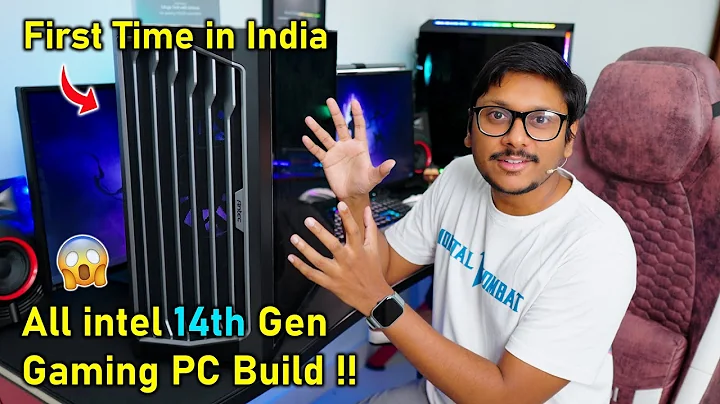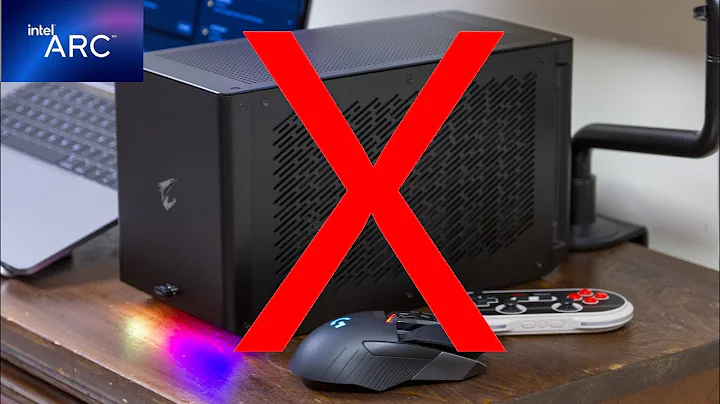Unveiling the Challenges of Ryzen and Memory Performance
Table of Contents
- Introduction
- The Issue with Ryzen and Memory Performance
- Enabling XMP Profile and the Initial Problem
- Troubleshooting the Memory Modules
- testing Individual Modules
- Identifying the Faulty Module
- Replacing Memory Modules
- Contacting G.Skill for Support
- Concerns with Ryzen and Memory Overclocking
- Conclusion
Introduction
In this article, we will delve into the potential issues that arise with Ryzen processors and memory performance. Specifically, we will explore a personal experience where enabling the XMP profile on a Ryzen system led to unexpected complications with the memory modules. Through troubleshooting and testing, we aim to shed light on what might have caused these problems and provide insights for others facing similar challenges. So, let's delve into the intricacies of Ryzen and memory performance.
The Issue with Ryzen and Memory Performance
Ryzen processors are known for their excellent performance, particularly in multi-threaded applications. However, some users have reported difficulties when it comes to memory performance with Ryzen systems. These issues can include difficulties in achieving high memory speeds, instability, or even system crashes. Understanding the potential challenges and finding ways to optimize memory performance with Ryzen is crucial for a seamless computing experience.
Enabling XMP Profile and the Initial Problem
Upon building a Ryzen system and reaching a stable state, the next step for many users is to enable the XMP (Extreme Memory Profile) in the BIOS settings. This profile allows the memory modules to run at their rated speed and voltage, ensuring optimal performance. However, as I enabled the XMP profile on my Gigabyte gaming five motherboard, an unexpected problem occurred.
Troubleshooting the Memory Modules
Realizing that one of the modules was not lighting up after enabling the XMP profile, I rebooted into the BIOS to rectify the issue. However, setting it back to the original mode did not solve the problem. Both memory modules were now unresponsive, with the system booting up in single-Channel mode. It became evident that something had gone wrong with the memory modules, leaving me perplexed about the cause behind this unfortunate turn of events.
Testing Individual Modules
In an attempt to identify the root cause of the problem, I started testing each memory module individually in different slots. This meticulous process involved inserting module 178 and module 177 into the motherboard one at a time. After hours of testing, it became apparent that module 178 was completely dead, rendering the system unable to post. On the other HAND, module 177 performed flawlessly, reaching overclocked frequencies without any issues.
Identifying the Faulty Module
With module 178 conclusively determined to be faulty, it was time to consider potential remedies. Still in possession of modules 176 and 175, I decided to test them as well. Resetting the BIOS to default, I found that module 176 and module 175 worked perfectly fine, zesting the RGB lighting and operating without any hiccups. This revelation raised questions about whether the issue lay with the specific module, the combination of hardware components, or the Ryzen processor itself.
Replacing Memory Modules
Given the malfunction of module 178, it became imperative to replace it with a new memory module. Contacting G.Skill, the manufacturer of the memory modules, for support and clarification seemed like the logical next step. While awaiting a response, caution prevailed, leading to the decision to abstain from further memory overclocking until the situation was resolved. Although disappointed, I remained hopeful for a solution that would restore smooth functioning and allow me to Resume testing.
Contacting G.Skill for Support
To Seek assistance and insight regarding the memory module issue, I reached out to G.Skill through email. Sharing the details of the problem, along with the steps taken for troubleshooting, I eagerly awaited their response. G.Skill's technical support and expertise would be vital in understanding the root cause and finding a suitable resolution. The response from G.Skill would determine the next Course of action in resolving the memory performance complications with Ryzen.
Concerns with Ryzen and Memory Overclocking
This experience has raised concerns about the reliability of memory overclocking with Ryzen processors. Despite following standard procedures such as enabling the XMP profile, unexpected complications arose, resulting in a defective memory module. The cautious approach to refrain from further overclocking until the issue is resolved Stems from the need to prevent any potential damage to the remaining modules. The stability and longevity of memory modules in a Ryzen system would require careful consideration for future overclocking endeavors.
Conclusion
The journey with Ryzen and memory performance has encountered a hurdle, but the search for a solution continues. Troubleshooting, testing, and reaching out to G.Skill for support are steps taken to determine the cause of the memory module failure. As the story unfolds, it highlights the importance of understanding the complexities of memory overclocking with Ryzen and the potential challenges one may face. The ultimate goal is to regain stability and achieve optimal memory performance, paving the way to resume testing and explore the capabilities of the Ryzen system.
 WHY YOU SHOULD CHOOSE TOOLIFY
WHY YOU SHOULD CHOOSE TOOLIFY

































